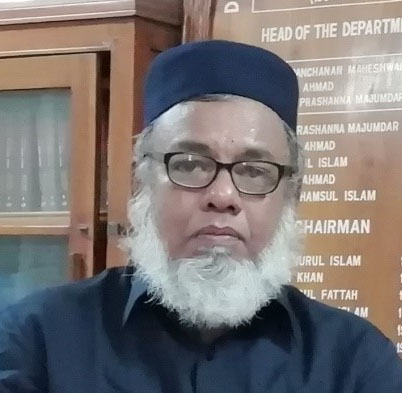Plenary Speaker
Professor Dr. Ashfaque Ahmed
Department of Botany, University of Dhaka, BangladeshSpeech Title: Comparative analysis of genetic diversity and population genetic structure of an important medicinal plant, Grewia nervosa from Gazipur and Cumilla Sal forests, Bangladesh
Abstract: The study was carried out to determine the genetic diversity and population structure of a medicinal plant Grewia nervosa (Lour.) Panigrahi from two different regions of Sal forest, where one region (Cumilla) showed more abundance of G. nervosa than Sal plant and another region (Gazipur) showed relatively less abundancet. Coupled with these intents we were also interested to find out the best genotypes which can be chosen for breeding program. With these purposes 10 RAPD and 7 ISSR loci were used in the present investigation. We found populations from Cumilla Sal forest showed significantly higher polymorphism and comparatively higher heterozygosity than that of Gazipur, very low gene flow and high differentiation among the populations of Gazipur Sal forest but moderate gene flow and less differentiation of the populations of Cumilla Sal forest. Absence of pollinators, seed dispersal agents and difference in pollinating system are assumed to be the probable reason behind these types of population differentiation.
Keywords: abundance; genetic diversity, gene flow; population differentiation; environmental variables
Biography: Professor Dr. Ashfaque Ahmed has completed his B.Sc. (Hons.) and M.Sc. in Plant Ecology from the Department of Botany, University of Dhaka, Bangladesh. He completed his MS in Natural Resource Management from Norway and PhD in Coastal Zone Ecology from the Department of Botany, University of Dhaka, Bangladesh. He has been working on different aspects including species diversity, genetic diversity, phytoplankton diversity, soil and water quality assessment, Ecosystem health, C-sequestration and C-reserves of plants and soils, and soil respiration of different forest ecosystems of Bangladesh namely Sundarban mangrove forests and Deciduous forests, and uses of GIS techniques and Satellite images in resource assessment, forest health, change detection of land use patterns of different ecosystems including Bangladesh, India and Nepal. He has supervised more than 20 MS and MPhil students and 1 PhD student. Currently he is supervising 4 MS and 3 PhD students. He has published more than 35 articles in different renowned journals published from Bangladesh, India, Pakistan, Nepal and Spain. He has been as the Executive Editor of Bangladesh Journal of Botany since 2021. He is currently holding the position of Secretary General of Bangladesh Botanical Society and Joint-General Secretary of Dhaka University Botany Alumni Association (DUBAA).

